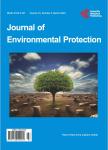Living in a Bottomless Pit: Households’ Responses to Land Subsidence, an Example from Indonesia
Living in a Bottomless Pit: Households’ Responses to Land Subsidence, an Example from Indonesia作者机构:Department of Human Geography and Planning Utrecht University Utrecht The Netherlands Department of Development Geography Universitas Gadjah Mada Yogyakarta Indonesia
出 版 物:《Journal of Environmental Protection》 (环境保护(英文))
年 卷 期:2019年第10卷第1期
页 面:1-21页
学科分类:1002[医学-临床医学] 100214[医学-肿瘤学] 10[医学]
主 题:Land Subsidence Households Impacts Responses Income Earning Capacity
摘 要:Land subsidence has severe physical and economic implications for both areas and people. Numerous scholars have shown that land subsidence has had massive impacts at global, national and regional levels, and that the impacts were usually responded to by the government. However, little attention has been paid to what land subsidence means to people’s daily lives and how much it costs them. To fill that gap, this article draws on empirical research carried out in three areas in Indonesia to provide a better understanding of what land subsidence means to households, and how they respond to the consequences and how much it costs them to do so. An analysis of a survey of 330 households shows that they have been suffering from various severities of impacts of land subsidence for an extended period. Whereas some of the households respond to the impacts by making small preparations or adapting to the damages, others can do nothing due to a lack of money and their continuously declining earning capacity. Thus, the affected households are effectively throwing money into a bottomless pit. We argue that these households must escape the vicious circle caused by land subsidence by increasing their income capacity or even abandoning the affected areas.



